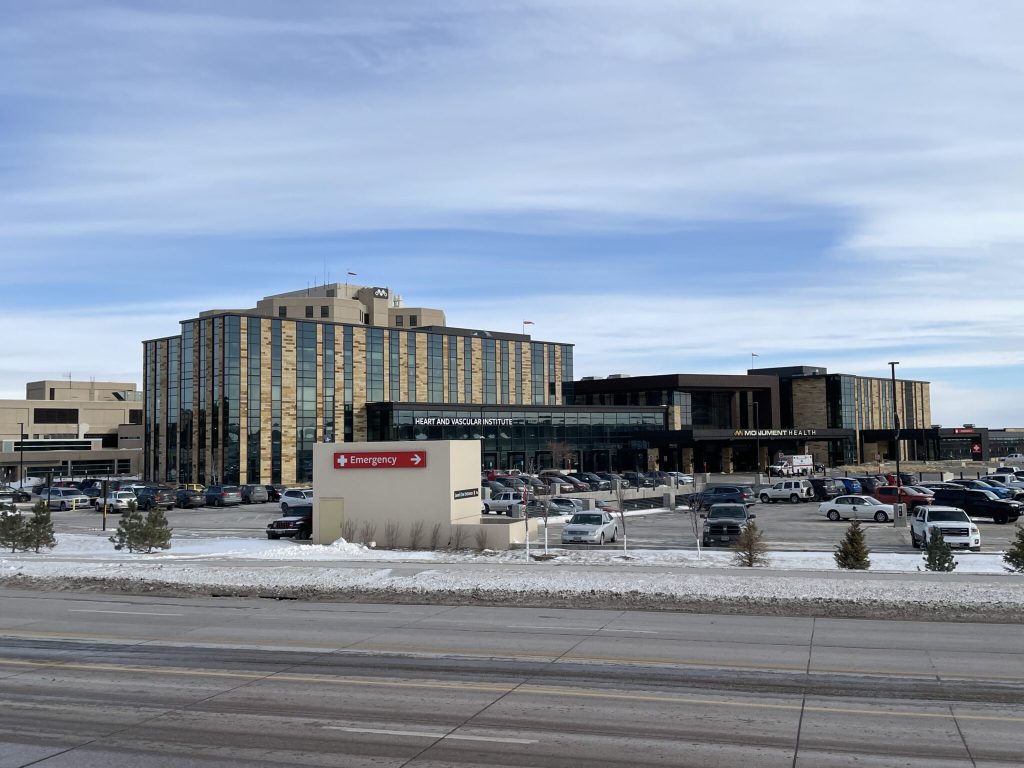PIERRE — Health care organizations opposed to Gov. Kristi Noem’s proposed funding cut for the South Dakota medical residency program say the decision could leave the state bereft of doctors.
Noem’s proposal comes as South Dakota and the rest of the country grapple with a worsening physician shortage, making states compete for medical professionals. The Association of American Medical Colleges projects the country’s doctor shortage will worsen to 86,000 vacancies by 2036.
South Dakota ranks 35th in the nation for patient-to-physician ratio, with 763 people for every one primary care physician. Fifty-one of South Dakota’s 66 counties are health professional shortage areas, according to the state Department of Health.
Earlier this week, Iowa Republican Gov. Kim Reynolds proposed creating 460 new medical residency slots in the state within the next four years to combat her state’s growing shortage.
Jacob Parsons, director of advocacy and reimbursement for the South Dakota Association of Healthcare Organizations, spoke against South Dakota’s proposed cut Tuesday during a meeting of the Legislature’s Joint Appropriations Committee.
“I think the message we’d be sending to our potential residents is that, ‘Why not go to Iowa?’ They’re going to put funding forward there,” Parsons said.
A residency, or graduate medical education, is an intensive, on-the-job training period for doctors after the completion of medical school.
The programs are funded by health systems, Medicare and state funds tied to Medicaid. Noem’s proposal would eliminate the state’s $1.7 million share from the general fund, as well as the $1.86 million match in federal Medicaid funds.
Since the program receives general funds and there aren’t any laws regarding the residency program funding, there won’t be a bill introduced about the funding cut. Lawmakers on the Appropriations Committee will decide whether to keep the money in the budget that’s ultimately presented to the full Legislature and the governor.
Appropriators heard the testimony after the state Department of Social Services presented its recommended budget on Tuesday. Residency programs in the state range from pediatrics to family medicine to internal medicine. South Dakota does not offer an obstetrics-gynecology residency.
Departmental Chief Financial Officer Jason Simmons said the state funding is based on the number of Medicaid patients served by residencies.
There are 78 residency programs impacted by the state general medical education funding between Sanford, Avera and Monument health systems, department Secretary Matt Althoff said. As of this year, there are 154 residents participating in the programs, Parsons said.
State funding for the rural residency program is separate from the general medical education funding. Noem proposed increasing general funds for the rural residency program by $70,821.
More than 80% of residents who complete their training in South Dakota stay and practice in the state, Parsons added.
Avera Health’s Vice President of Public Policy Kim Malsam-Rysdon, who served as state Department of Health secretary from 2015 until 2022, said the health care system is grateful Noem recommended continuing funding for the state’s rural residency program. But if South Dakota doesn’t have the same capacity for residencies as other states, she said, “we’ll lose doctors to other states where they’re being trained.”
If the state doesn’t continue to support the programs with state Medicaid funding, Malsam-Rysdom said, some residency slots will be at risk of being cut altogether.
“If those funds aren’t continuously appropriated,” Malsam-Rysdom said, “we’ll have some hard questions to answer about the ability to continue to support medical students who are training in our space.”


